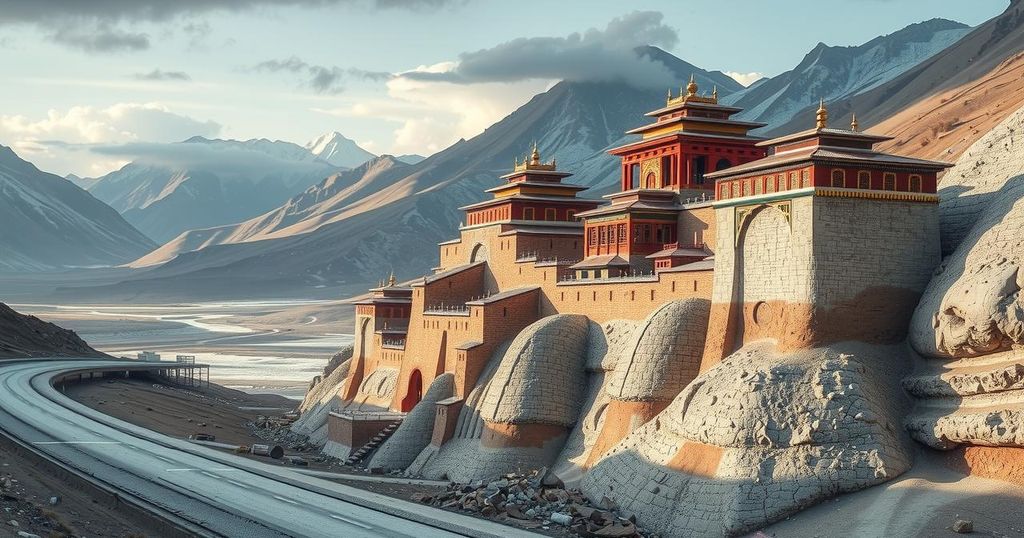China is pursuing extensive hydroelectric dam construction in Tibet, harboring ambitions to harness the region’s hydropower despite risks associated with seismic activity. Recent earthquakes have led to significant loss of life and property, raising concerns about the environmental impact and geopolitical ramifications of the planned projects. Critics highlight the strategic obscurity of China’s energy plans amid local and international scrutiny.
China is intensifying its focus on Tibet for hydroelectric dam construction, even amid the region’s susceptibility to seismic activity. Following a significant earthquake that resulted in 126 fatalities, authorities have launched extensive rescue efforts, deploying over 14,000 personnel. Despite adverse weather and loss of thousands of homes, China remains steadfast in its plans, which include the construction of 193 dams designed to harness Tibet’s immense hydropower potential. Environmental concerns grow over increased risks of landslides and flooding due to these projects, which have been contentious among local communities and neighboring countries. Reports suggest that while Tibet could yield up to 110 gigawatts of energy, the implications for the environment and geopolitical stability are significant, given the proximity to India and other downstream nations.
Moreover, traditional opposition from the local population has surfaced, particularly against projects threatening significant cultural sites, such as temples located in Sichuan province. Although criticism has emerged regarding the strategic obscurity of the hydropower expansion details by the Chinese government, China’s official channels have remarked on the construction of what is projected to be the largest dam in the world on the Yarlung Tsangpo River. Analysts predict that Beijing’s commitment to these infrastructure plans reflects its ambition to elevate energy production whilst adhering to emissions reduction goals, likely progressing despite the challenges.
The situation remains fluid, with on-going debates regarding the environmental and sociopolitical ramifications of the ambitious dam projects in this geologically volatile region.
Tibet, positioned on a major geological fault, has a long history of seismic activity, making it an inherently risky site for large-scale construction projects such as hydroelectric dams. China has long identified the region’s hydroelectric capacity as critical to its energy strategy, leading to plans for numerous dams. These projects are intended to meet domestic energy demands while promoting renewable energy sources. However, the local terrain and environmental conditions pose substantial risks, compounded by the recent devastating earthquake that has raised alarms about the feasibility and safety of constructing such infrastructure in the region. The ongoing expansion plans have drawn significant scrutiny from environmentalists and international observers, concerned about the potential for increased landslides and flooding. Moreover, the geopolitical ramifications of these projects, particularly in relations with neighboring countries like India, are under close examination as well.
In conclusion, China’s dramatic push for hydroelectric infrastructure in Tibet, particularly following a severe earthquake and amidst ongoing environmental concerns, highlights the tension between energy aspirations and ecological and social stability. While asserting an intent to leverage Tibet’s hydropower potential for a sustainable future, the nation must balance the implications of such projects on local communities and international relations. Despite evidence of resistance and the complicated logistics of construction, analysts suggest that Beijing is committed to advancing its infrastructure agenda, raising both hopes and concerns in equal measure.
Original Source: www.asianews.it






